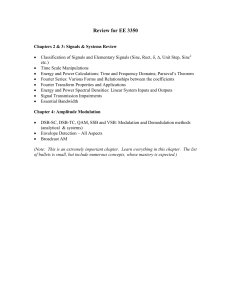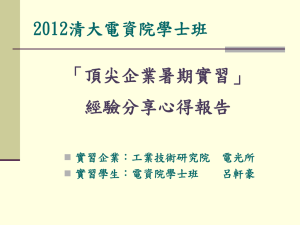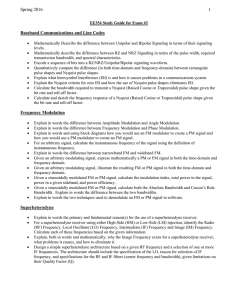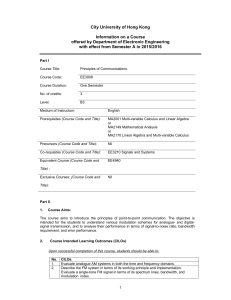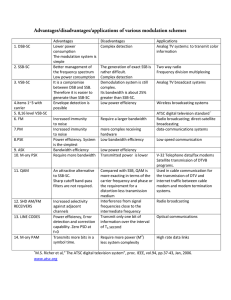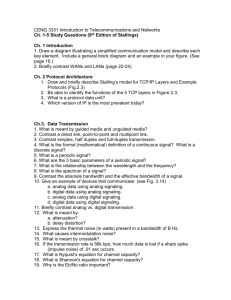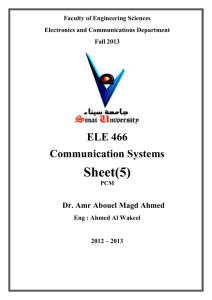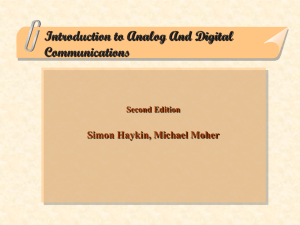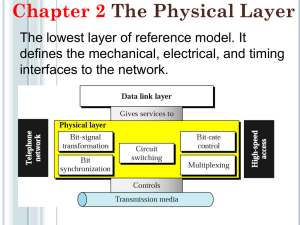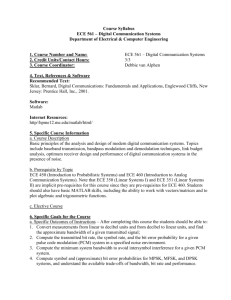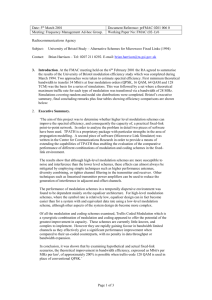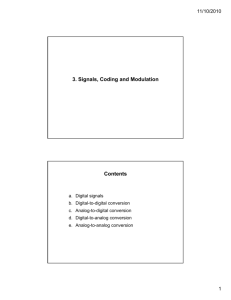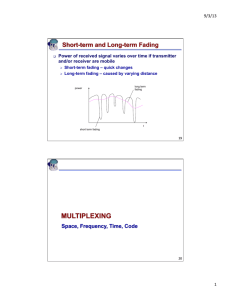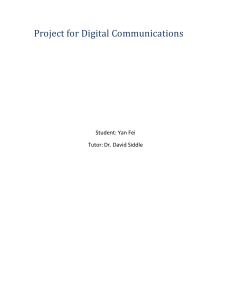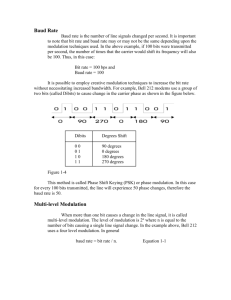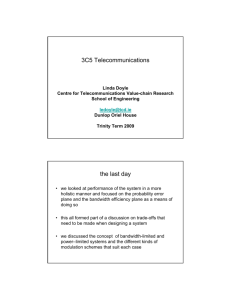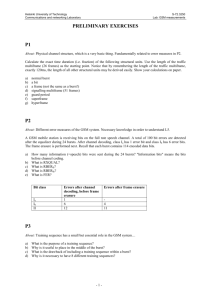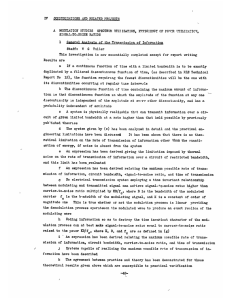Review for EE 3350
advertisement
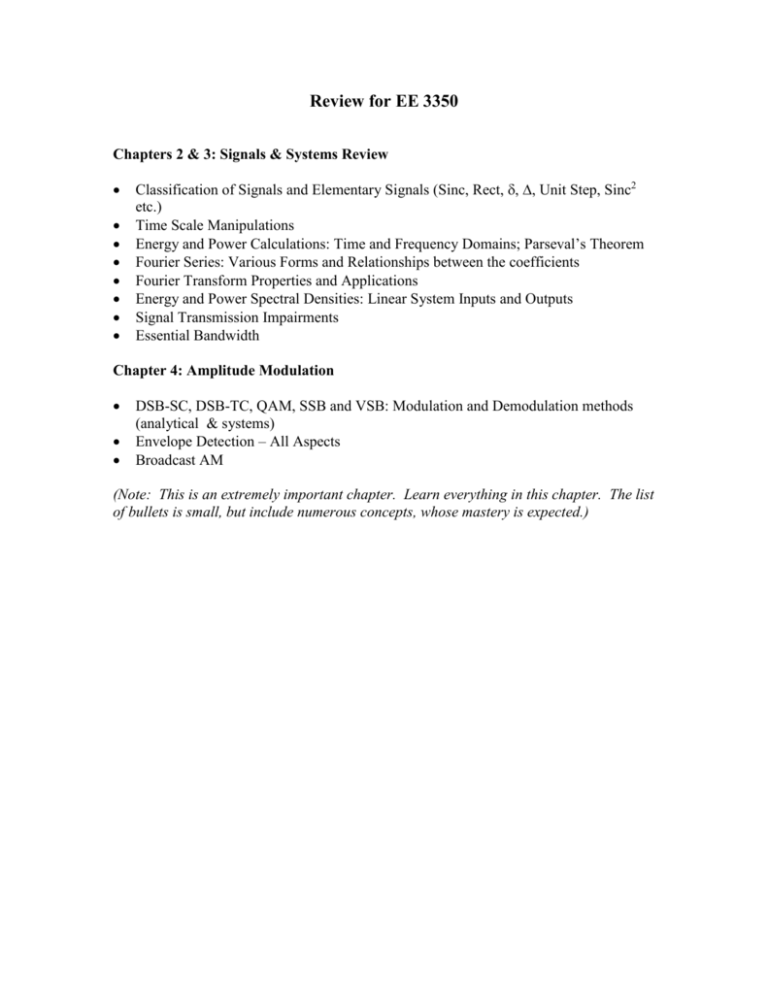
Review for EE 3350 Chapters 2 & 3: Signals & Systems Review Classification of Signals and Elementary Signals (Sinc, Rect, , , Unit Step, Sinc2 etc.) Time Scale Manipulations Energy and Power Calculations: Time and Frequency Domains; Parseval’s Theorem Fourier Series: Various Forms and Relationships between the coefficients Fourier Transform Properties and Applications Energy and Power Spectral Densities: Linear System Inputs and Outputs Signal Transmission Impairments Essential Bandwidth Chapter 4: Amplitude Modulation DSB-SC, DSB-TC, QAM, SSB and VSB: Modulation and Demodulation methods (analytical & systems) Envelope Detection – All Aspects Broadcast AM (Note: This is an extremely important chapter. Learn everything in this chapter. The list of bullets is small, but include numerous concepts, whose mastery is expected.) Chapter 5: Angle Modulation Time Domain Expressions for EM, FM and PM Instantaneous Frequency and Phase: Definition and calculation NBFM and NBPM – Characteristics Estimating the bandwidth of EM, PM and FM signals Changes in FM/PM/EM Signal Bandwidth due to the changes in the characteristics of the message/modulation signal Tone Modulation and its spectral characteristics Frequency Multiplication and its effect on carrier frequency and frequency deviation. How does it differ from frequency conversion? Armstrong’s method of FM Generation: Relationship between various parameters FM Demodulation Methods: FM Discriminator, PLL Pre-emphasis/De-emphasis FM Chapter 6: Pulse Code Modulation Sampling Theorem and Signal Reconstruction Aliasing and how to avoid it “Two pieces of information” in 1 Hz Bandwidth: Minimum Transmission Bandwidth Quantization: Converting Samples to Bit Stream Uniform/Linear μ-law and A-law Accuracy Specifications: Max Quant. Error, SNRQ Data Rate, Signaling and Transmission Bandwidth DPCM: Quantizing the prediction error For fixed number of bits per sample, increases SNRQ over PCM For fixed SNRQ reduces the number of bits per sample Delta Modulation: 1-bit quantizer, 1-sample predictor version of DPCM. Slope overload and granular noise dictate the choice of step size. Heavily oversampled. Chapter 7: Transmission of Digital Data Line Codes and Transmission Bandwidths Nyquist Criterion for zero Intersymbol Interference Characteristics of Nyquist Criterion Pulses (Spectrum, Waveform) – Max. Data Rate, Transmission Bandwidth, Roll-off Factor Data Rate, Roll-off Factor and Transmission Bandwidth – Relationship Controlled Intersymbol Interference: Duobinary Signaling and its characteristics Precoding (Differential Encoding) Digital Carrier Systems: Waveforms and Transmission Bandwidths Chapter 10: Random Variables Concept of a Random Variable Discrete and Continuous Random Variables, PDF and CDF Uniform and Gaussian Distributions Standard/Canonical form of a Gaussian PDF (zero mean, unity standard deviation) and associated tables General Form of the Gaussian PDF, and how to calculate various probabilities using the tables for the standard form Threshold Detection: Probability of Error Calculation for polar signaling Total SNR of a PCM System: Depends on (1) Signal Behavior, (2) (In)Accuracy of Quantization, and (3) (Un)Reliability of the digital communication system. Chapter 13: Digital Communication Receiver and Performance The Concept of a Matched Filter General Binary Detection: MF Impulse Response for various signaling Threshold Calculation Probability of Error Calculation for various signaling schemes (Baseband and Carrier) and how to use in a SNRPCM calculations.
